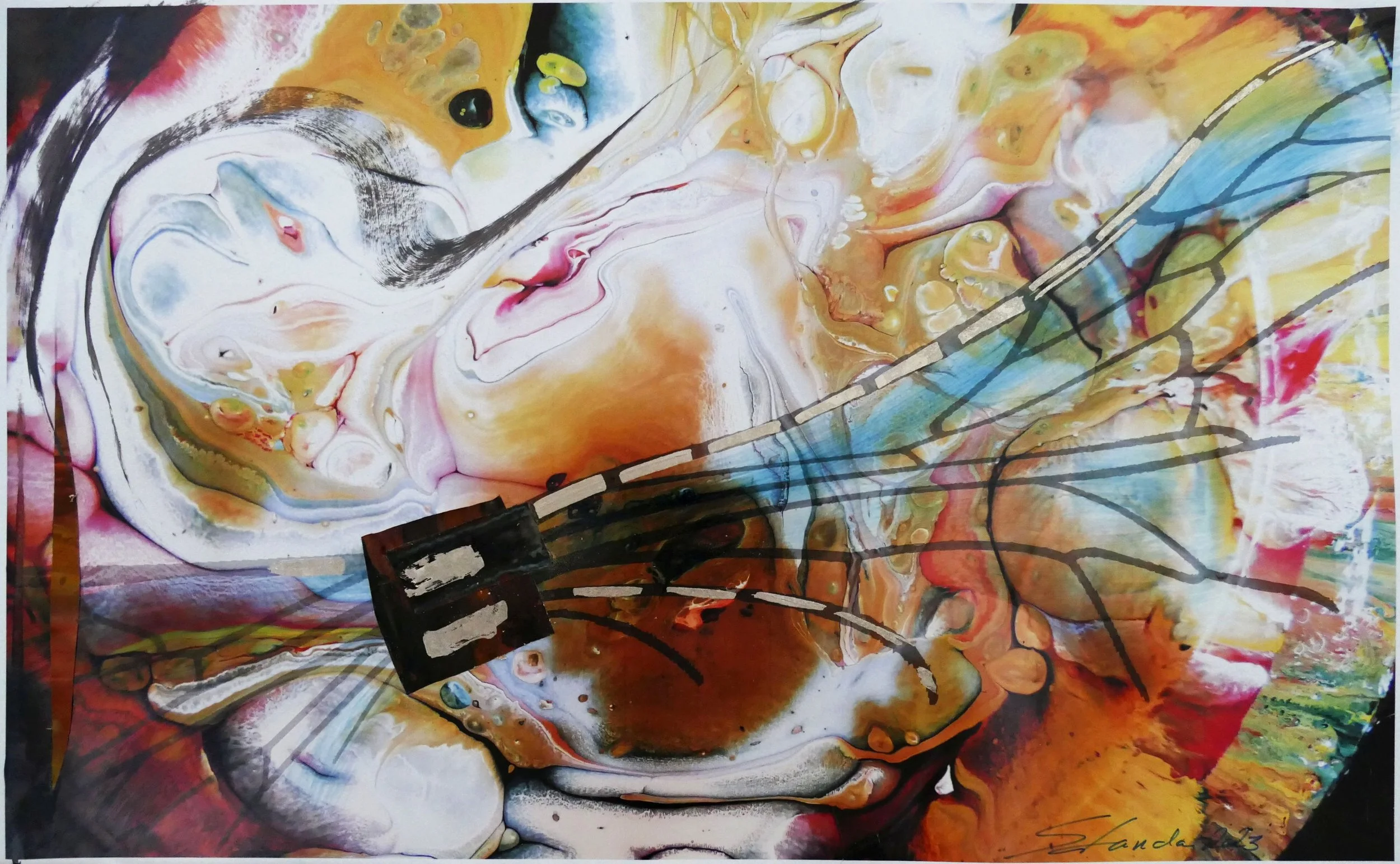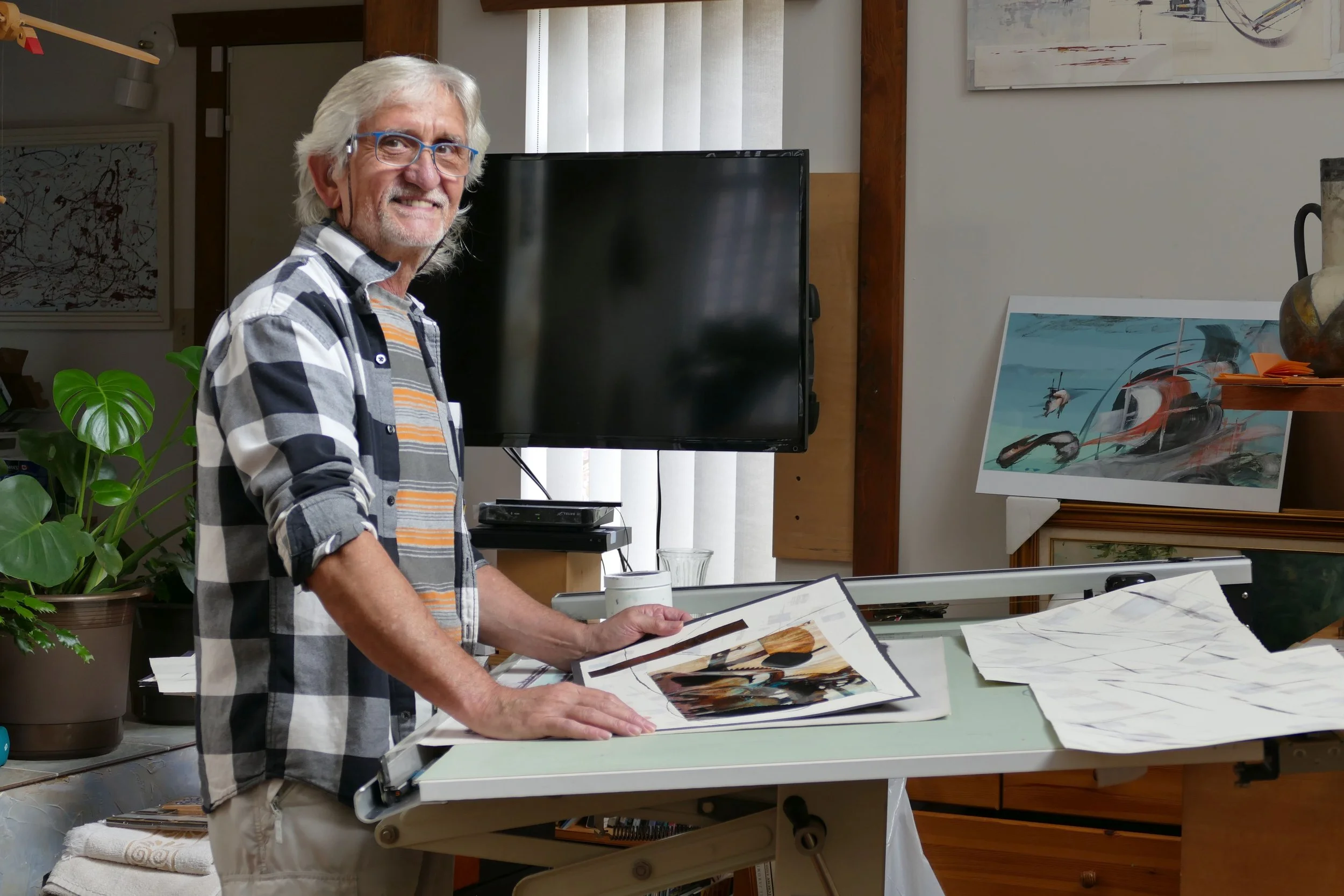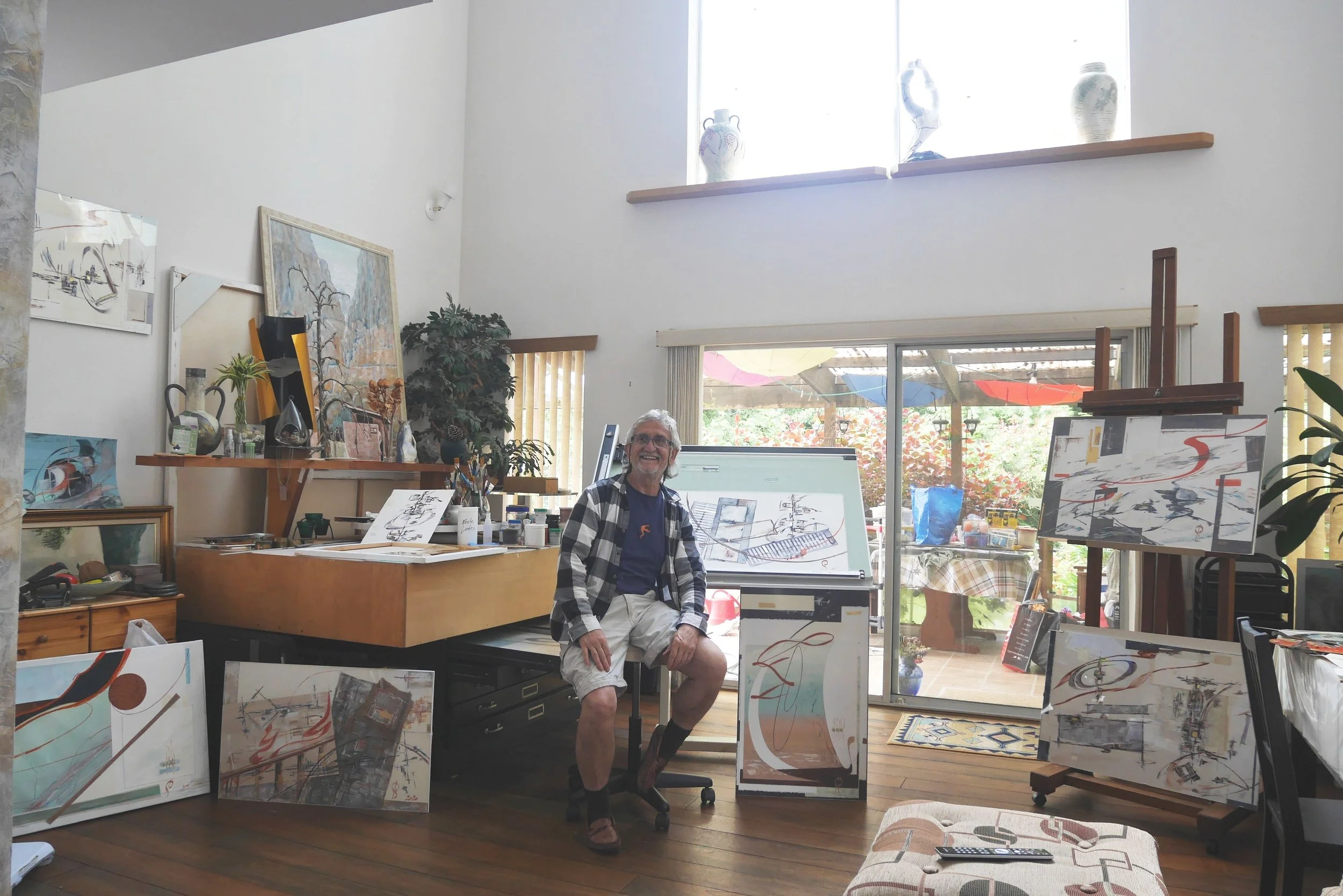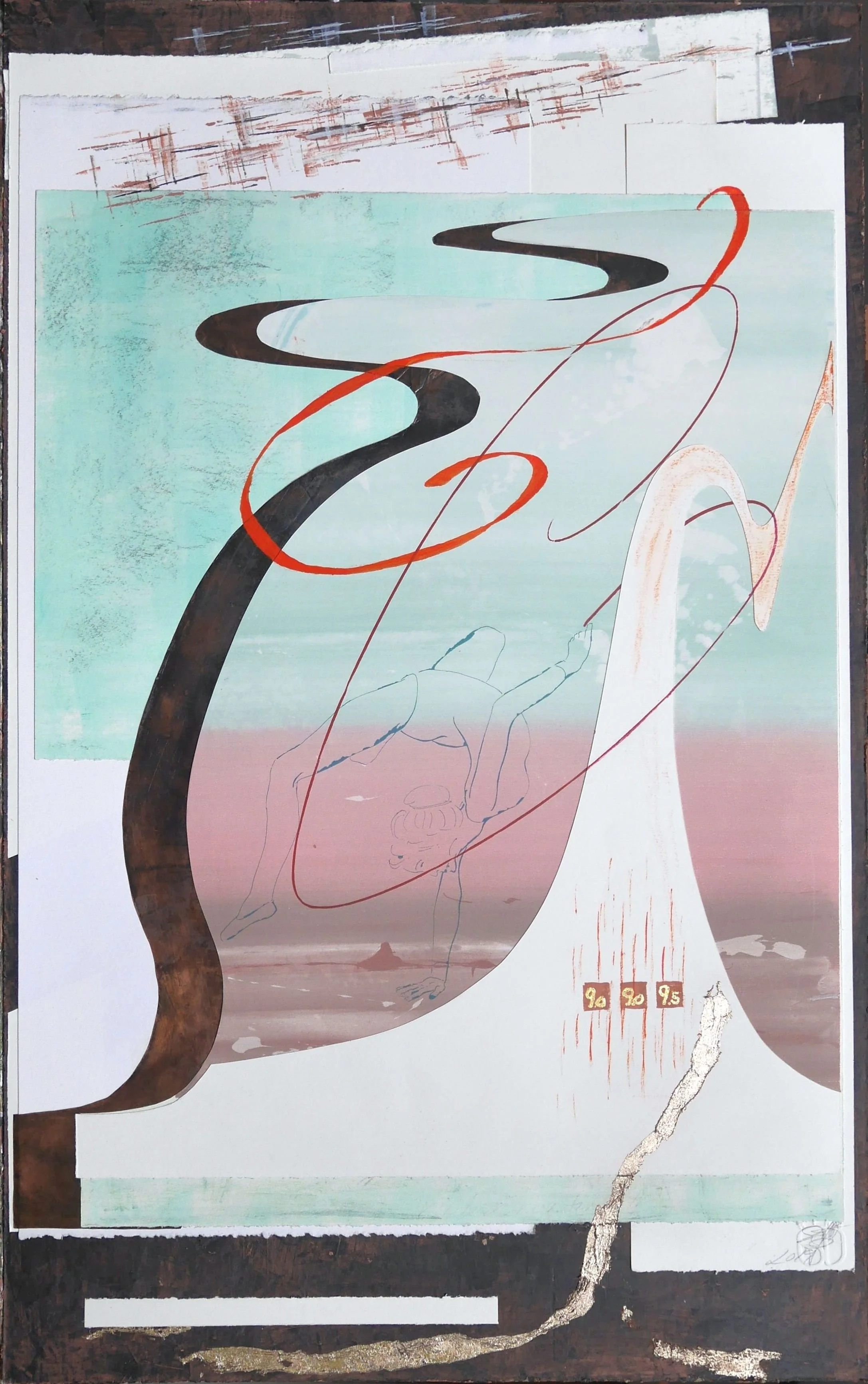Interview with Stanislav Riha - Standa
Born in 1952 in Prague, former Czechoslovakia. He grew up in Lesser Town (Malá Strana), surrounded by great medieval and modern art and artists that caused his desire to create.
In 1980 he lived a year in Grinzing, Vienna, Austria, and then he moved to Vancouver, BC, Canada.
Artist's statement:
In the last three decades, I have been creating wall-mounted, cast resin and aluminum sculptures combined with canvas and gold leaf, and exploring the computer as an art tool for creating digital artwork.
All my life, I have loved to create art full of emotions and feelings, "soul," with the satisfaction of fun. I am interested in the balance and composition of colours and objects rather than the reality of the items.
The direction of the last two decades is aimed at understanding and, through artwork, expressing the human struggle of emotions and adaptions. For the past ten years, I have been polishing my creative work in the Surreal-abstract style.
The main motto of my artwork is;
Just as in a good story, the readers have space to create their image; in a good impression, the viewers can create their own account.
Growing up in Lesser Town, Prague, surrounded by medieval and modern art, can you share how this environment influenced your early desire to create and your artistic style?
I do not know If the art of the Lesser Town shaped my artistic style but drew out my creative abilities and desire to create art. Growing up in an atmosphere of admiration for artistic values made me want to create as well, using the most accessible tools I had as a child, pencil and paper, which was the base of my style, always starting with pencil and paper.
You initially enjoyed drawing and painting before focusing on surrealism as a young man. What prompted this shift in artistic focus, and how has surrealism shaped your work?
As a young artist, I soon realized there is much more to the seemingly simple, realistic World surrounding us. Besides the physical size of the World, there is the mental size, which influences our feelings and reactions. I was entirely controlled by the idea of the World beyond realism and became surrealist. Since then, I have never seen the World as an unchanging reality but the World we reacted upon and tried to adapt to mentally. The World became a much more challenging and excitingly scary place, where the imagination has its place as strong as reality, if not even more vital.
Throughout your artistic career, you've drawn inspiration from life's dilemmas and emotions. Could you share a specific experience or moment that profoundly influenced your artistic direction and how it reflects in your works?
Despite many of life’s ups and downs, some were more emotional than others, and it was necessary to understand the emotional dilemmas. I found through readings about emotions and adaptions, which helped me see below the surface of human behavior and try to include feelings in my artwork. That attitude stayed with me in my work even into the future.
And there were natural artists like Dali, Picasso and Hironimus Bosch, and architects (Frank O. Gehry) as well as classical composers (Dvorak and Beethoven), even metal artists like Pink Floyd and jazz music. The dynamics of music have been the primary influence on my compositions.
Working in set production at the Realistic Theatre must have been a unique experience. How did this role contribute to your artistic skills and vision?
Life theatre was exciting not just for the actor’s roles and actual plays, but for me, it was the stage set's design. The designer had to deal with many places of a story in one format, mainly through symbolism, lights and structural characteristics of different scenes created in one piece of three-dimensional artwork. Stage design and production fascinated me enough that, late in 2000, I worked for no pay with the Colling Wood School music department on stage design and production for three musicals.
Your art has been showcased in private collections and resorts worldwide, including countries like the USA, Canada, and Japan. How do you think the diverse cultural contexts of these places have received and interpreted your art? Are there any memorable reactions or interpretations that stood out to you?
It makes me proud and happy even though, as I always found out, it was not much different from international art shows because my art was among hundreds of accepted artworks and dozens of artists in many cases. The one which stood out most? It is always the new one when you hope you will be superior to others, and then I realized there are hundreds of outstanding artists around the World. It is just a matter of personal taste. Usually, when it was done, it became one of many, and I looked forward to the next one.
2023 has been a remarkable year for you, with awards like the WWA magazine back cover contest and being a finalist in the Red Dot Miami. How do these recognitions impact your artistic journey, and what do they signify to you personally?
Naturally, it made me feel great at first, but then I realized that it is also a great responsibility and task to keep it up. Fulfilling the expectations of the art world is a beautifully scary task, which keeps your mind busy even at night; on the other hand, it does not leave too much space for negative aspects of daily life. Personally, it is a very addictive drive for life and creating. It makes me do and experiment a lot more.
Later in your career, you transitioned to Surreal and Surreal-abstract work. What inspired this change, and how do you blend elements of realism and surrealism in your current artistic approach?
For this question, I have to go back to the question three. It was the understanding of the importance of emotions and adaptions in our lives. Surrealism is fantastic for expressing the beyond reality of life. Still, if I wanted to add emotions and feelings to the artwork, I believe the only way to express human emotions and adaptions is through an abstract process. Either it is multi-coloured parts or calligraphy lines running from the subject all over the canvas, which takes the role of feelings, emotions and process of adapting in the artwork.
Having participated in numerous solo and group exhibitions, and being published in various art books and magazines, how has your artistic process evolved over the years? Are there any particular mediums or techniques that you've grown to prefer?
Being part of many publications and shows allowed me to look at fellow artists around the World and realize that, since there are not many artists using the same technique as I do, I should stay with my style and keep improving it. Seeing the high-resolution reproduction possible today, not just in publications but in the actual size of the artwork, made me continue using real metal, mainly stainless steel, copper and gold leaf, to make my art reasonably protected from reproductions.
Drawing from your extensive experience, what advice would you give to young artists who are just starting and aspire to have a career in the arts?
Do not try for the best immediately; always do as much as possible. In art, the quality follows the quantity. The more artwork an artist makes, the more confident they will become. The confidence coming from the amount of work brings quality and superior artwork. I approach everything I do, even house chores, as an artist and treat everything as an artwork, thinking of composition and presentation.
Looking ahead, what future projects or artistic endeavors are you most excited about? Also, as an artist who has achieved considerable success, what advice would you give to aspiring artists who wish to follow a similar path?
In the future, I look forward to exhibiting in more important cities of the World. I look forward to exhibiting in Madrid and Paris in early 2024 and hoping for sponsors to help with solo shows.
My recommendation for artists who wish to challenge the World art scene is to always keep going and take any setback as education for the next step. Since you are trying to challenge the World, make sure you get educated in the art style you want to follow; it is essential to understand your path of creativity. Be grateful for admirers and booers as well; they express interest in your work by reacting to it. We all have different tastes, and to like something, we must feel good, which is problematic. And mainly keep creating all the time, because that is what all the good artists do.

















